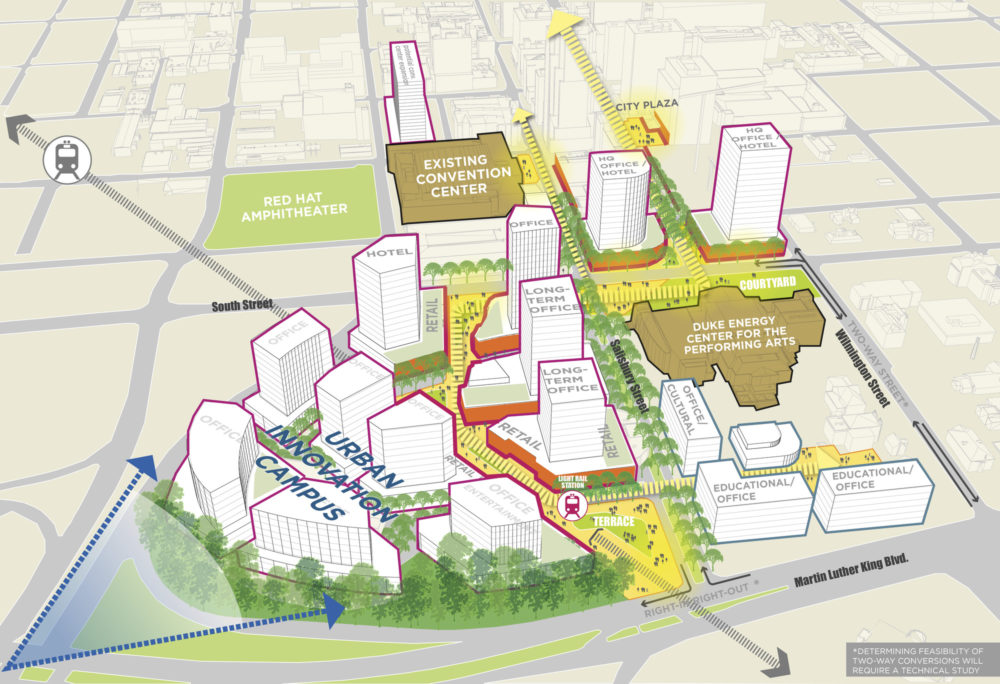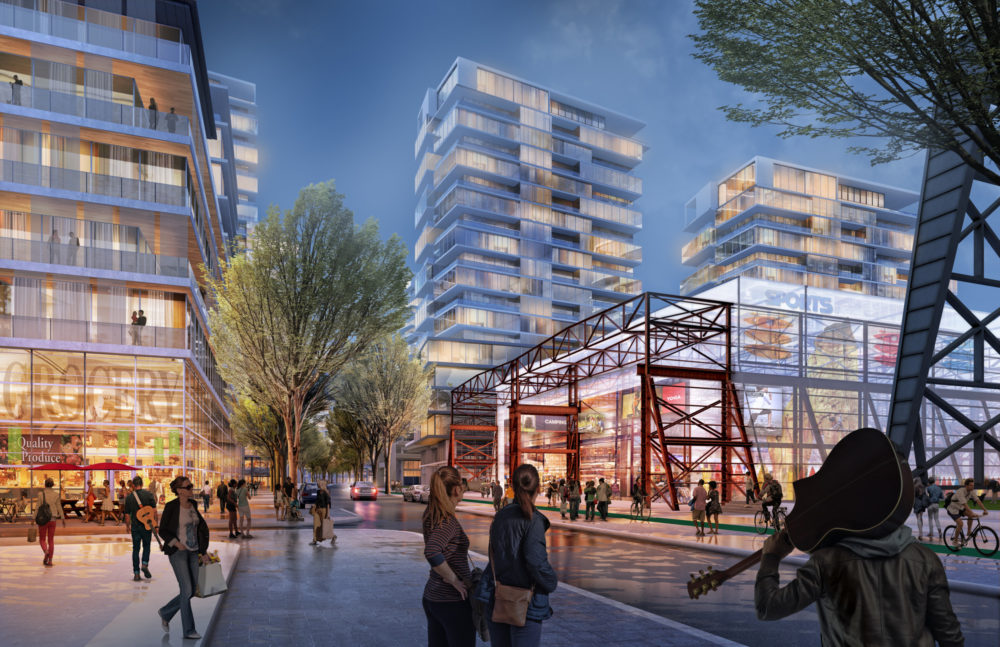Building community around the generation of ideas in a vibrant new mixed-use setting
Midtown Detroit TechTown District
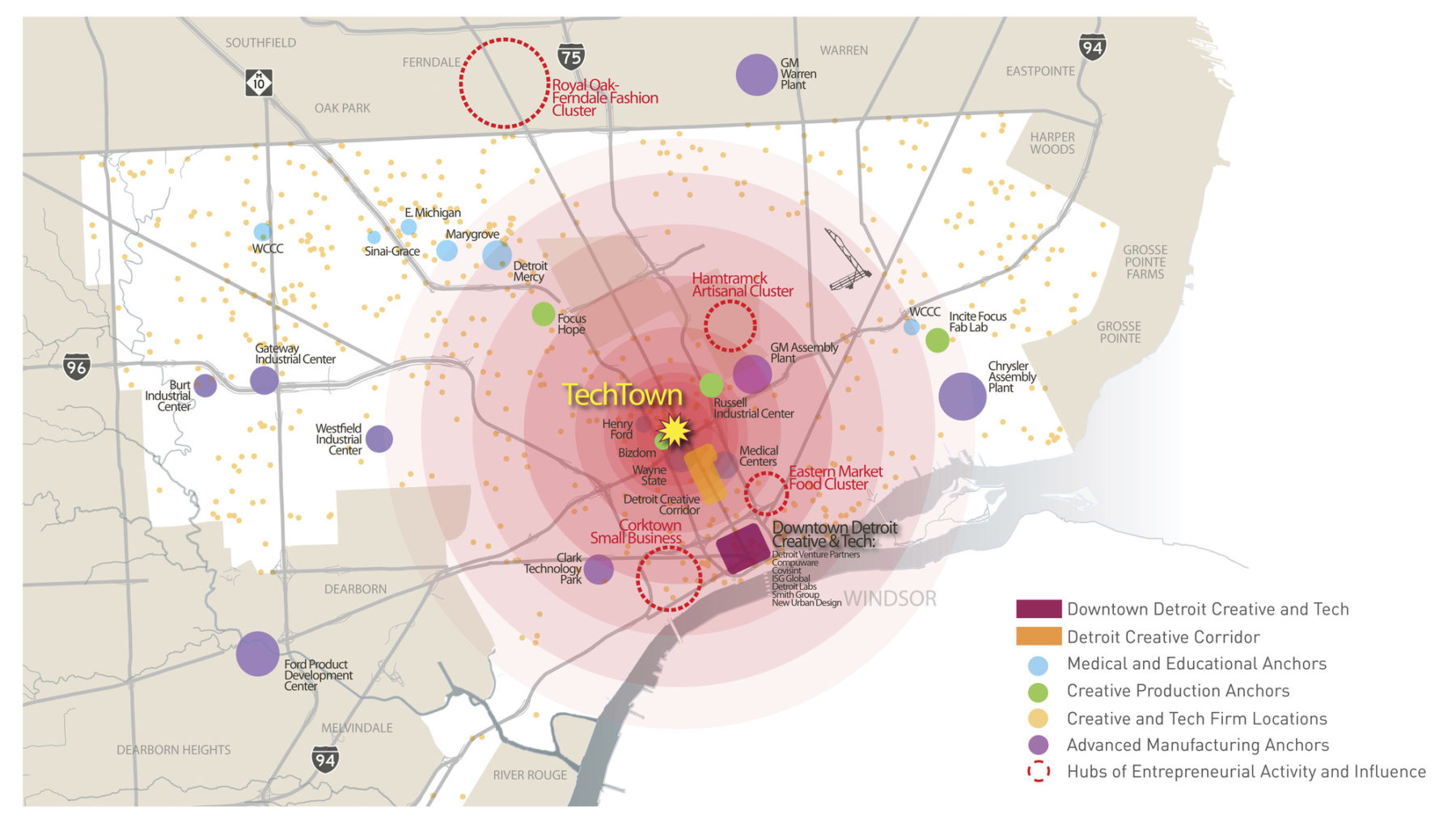
The core plaza is the central feature of the plan, and will be the focus of early investment. A variety of public realm investments will encourage collaboration and the generation of ideas.
TechTown—an emerging knowledge district in Midtown Detroit—is currently characterized by surface parking, vacant properties, and inward-facing, siloed hubs of activity. The TechTown District Plan articulates an inspiring vision for the revitalization of the district.
Developed by Sasaki Associates in collaboration with Midtown Detroit Inc. and U3 Ventures, the plan accelerates innovation, promotes entrepreneurship, and builds community around the generation of ideas in a vibrant, mixed-use setting. Leveraging the potential of key institutional anchors within the district (Wayne State University, College for Creative Studies, and Henry Ford Health System), the plan creates an environment that fosters knowledge generation and innovation. The plan repurposes the historic building stock with uses that support innovation and create vibrancy, and also strengthens connections within Midtown Detroit and to surrounding neighborhoods.

TechTown is an emerging knowledge district that is leading the city’s transition from an automobile-based to an innovation-based economy. The District is situated along the Woodward Ave corridor where a new light rail line is currently being implemented.
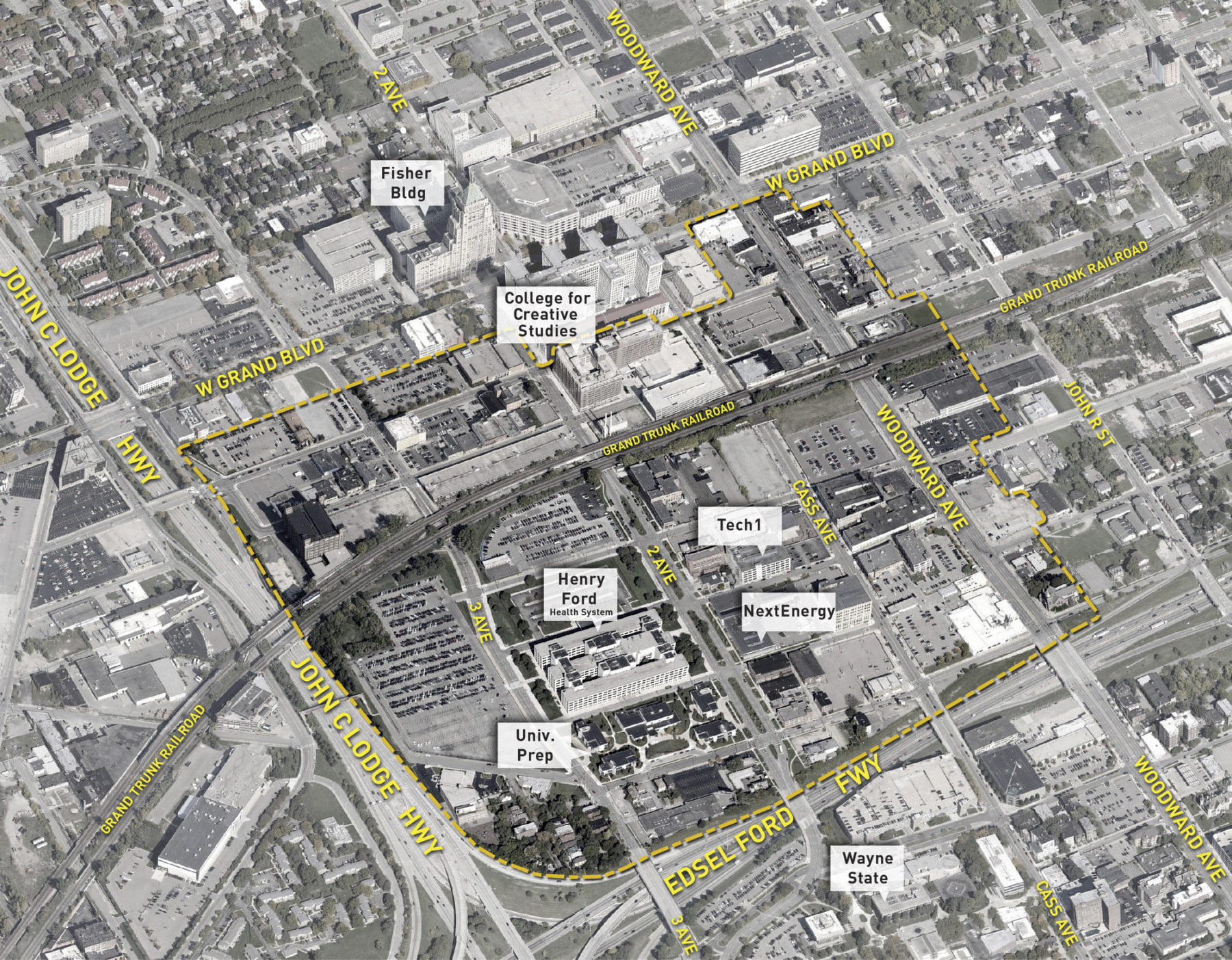
Several site considerations, including increasing safety in the district and utilizing the historic building stock, were woven into the planning principles
A key feature of the plan, and an early action item, is a plaza at the heart of the district that contains a variety of program and design elements to foster creativity and the exchange of ideas throughout all seasons, flexible places and spaces for planned and serendipitous gatherings. Collaboration cubes—moveable, adaptable workstations—can be reconfigured and relocated to meet specific user needs. The cubes also become icons for the district. Fabrication labs anchor the southern side of the plaza. A projection screen, climbing wall, fire pits, and a café with seating among a grove of trees attract knowledge and creative workers to the heart of the district. The plaza hosts events such as a maker’s fair and hacker challenge in the summer, while curling lanes and campfires activate the plaza during the winter.
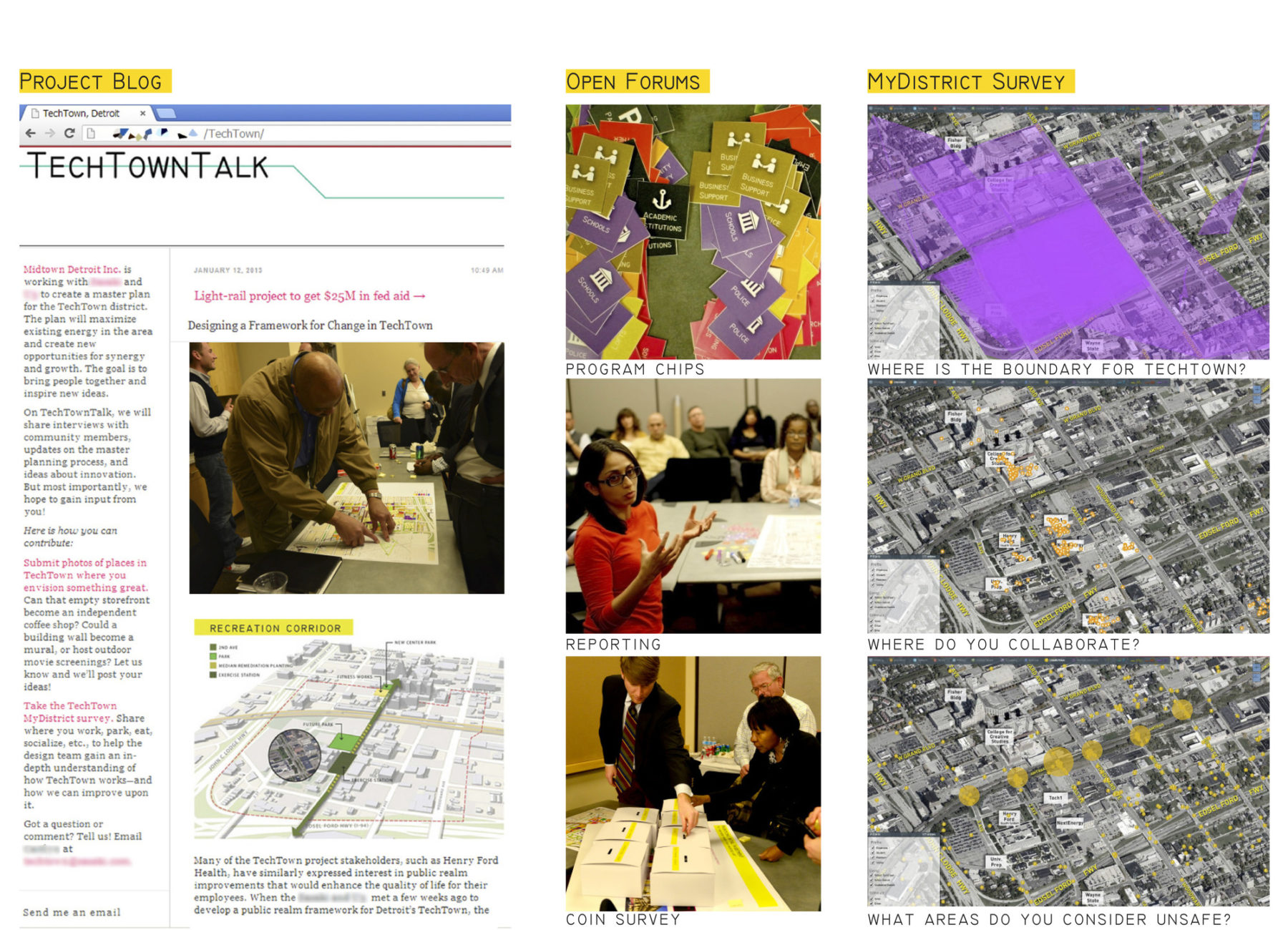
A variety of creative strategies were employed to encourage stakeholder participation in the development of the plan, including interactive games, online surveys, prioritization exercises, blog streaming, and public open forums. A core committee of institutional leaders were consulted at each milestone.
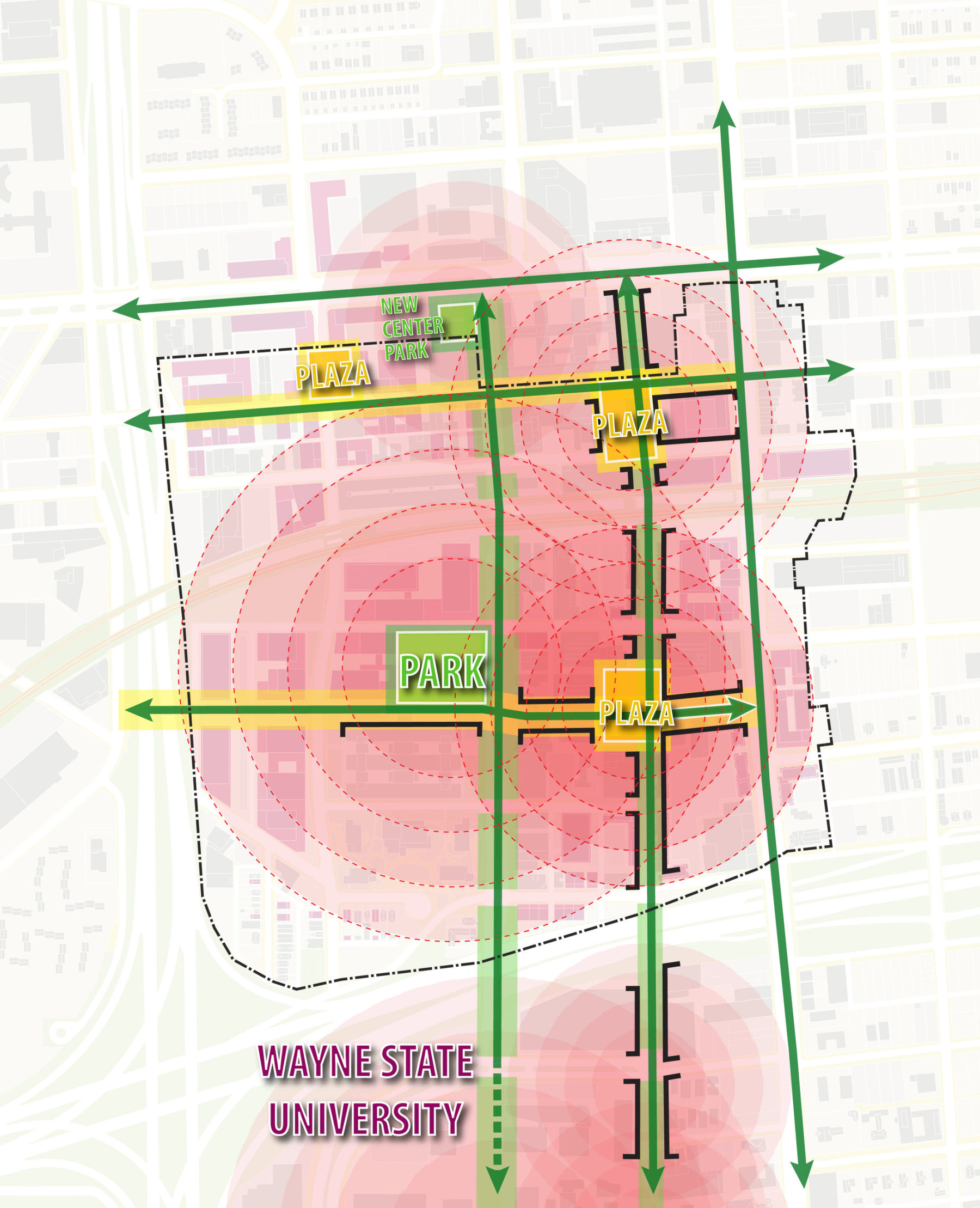
The vision for TechTown is structured around a public realm framework that defines key corridors and connects anchor institutions
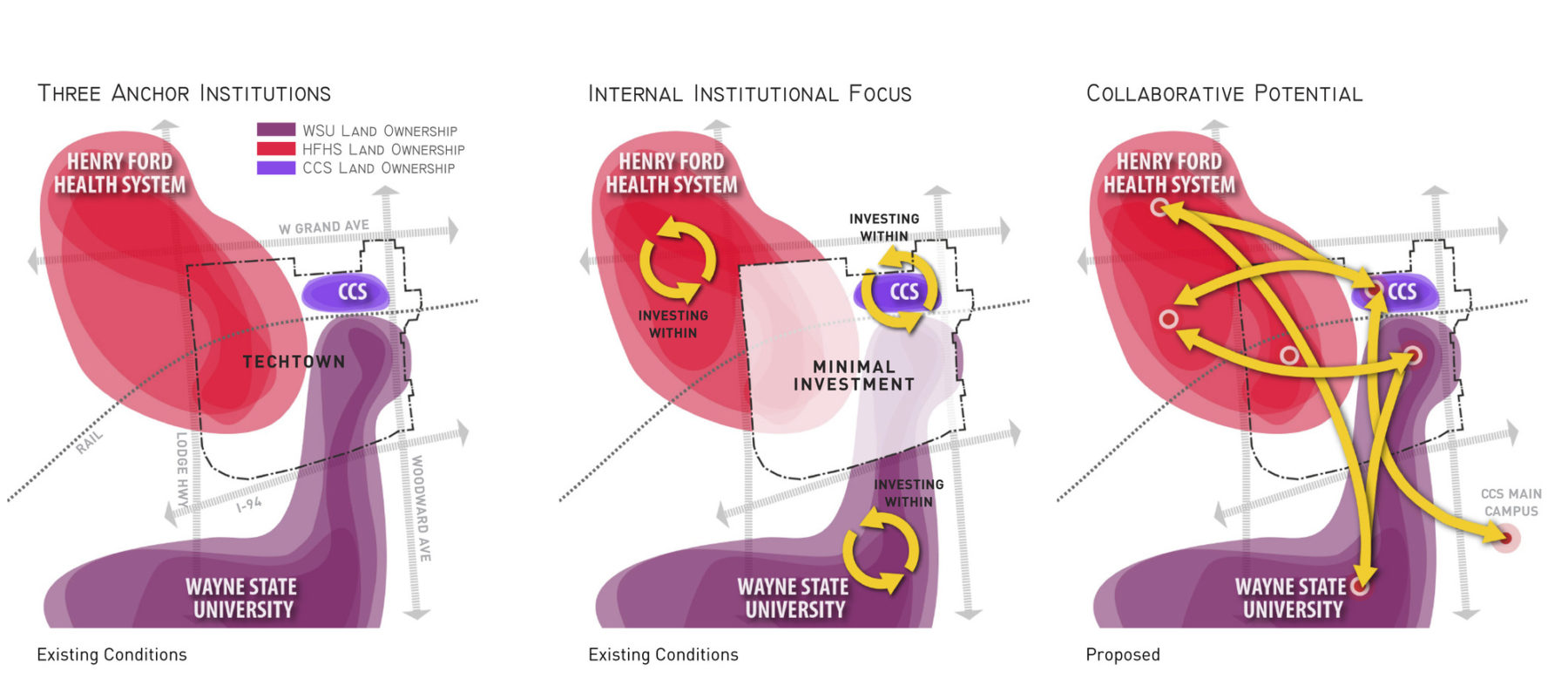
TechTown is anchored by three key institutions: Wayne State University, Henry Ford Health System, and the College for Creative Studies. While each institution had previously prepared individual development plans, the plans did not leverage opportunities for collaboration in TechTown.
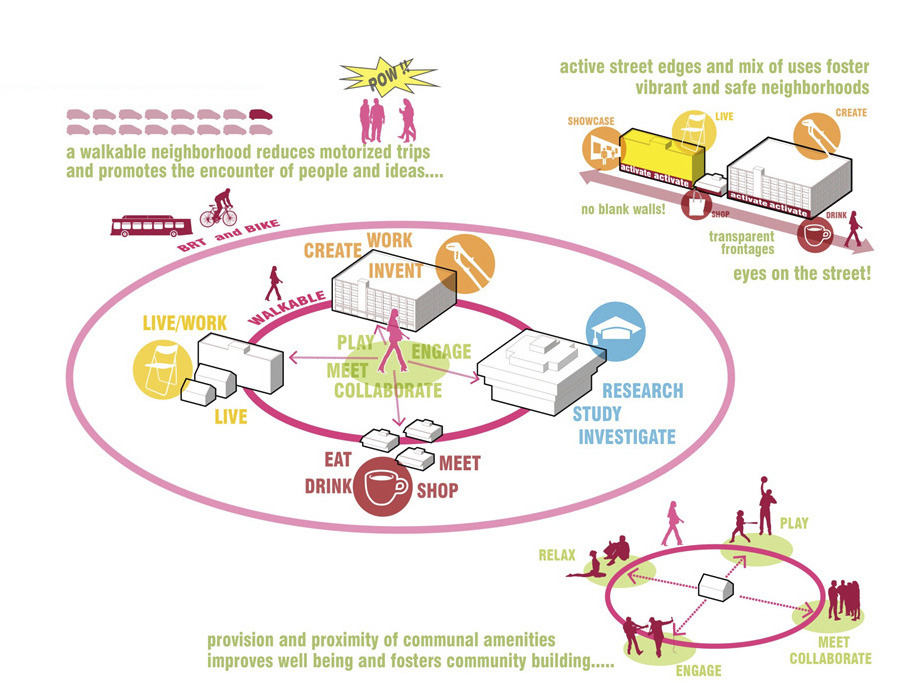
The plan is driven by several planning and design principles that address site challenges and support aspirational goals for the district
The vision for TechTown is structured around a public realm framework that defines key corridors and connects anchor institutions
TechTown is anchored by three key institutions: Wayne State University, Henry Ford Health System, and the College for Creative Studies. While each institution had previously prepared individual development plans, the plans did not leverage opportunities for collaboration in TechTown.
The plan is driven by several planning and design principles that address site challenges and support aspirational goals for the district
A community park and two additional plazas connected along landscaped corridors provide a range of amenities. This robust public realm framework and urban design strategy transforms parking lots and vacant sites into places for people to come together.
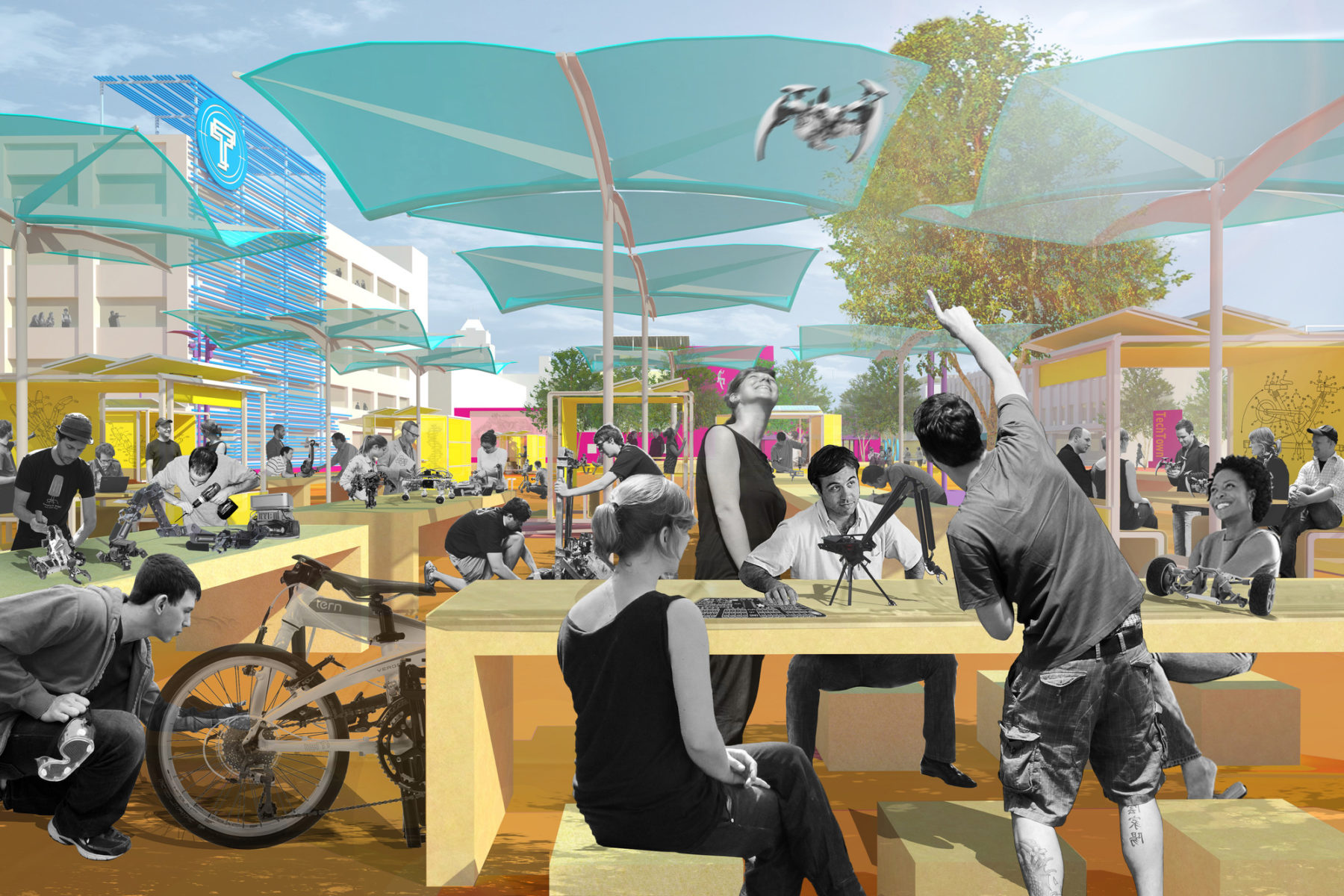
Fabrication tables extend from the adjacent fab-lab to facilitate the visible testing and development of new products. Shade stuctures and complementary landscaping create a comfortable environment for collaboration.
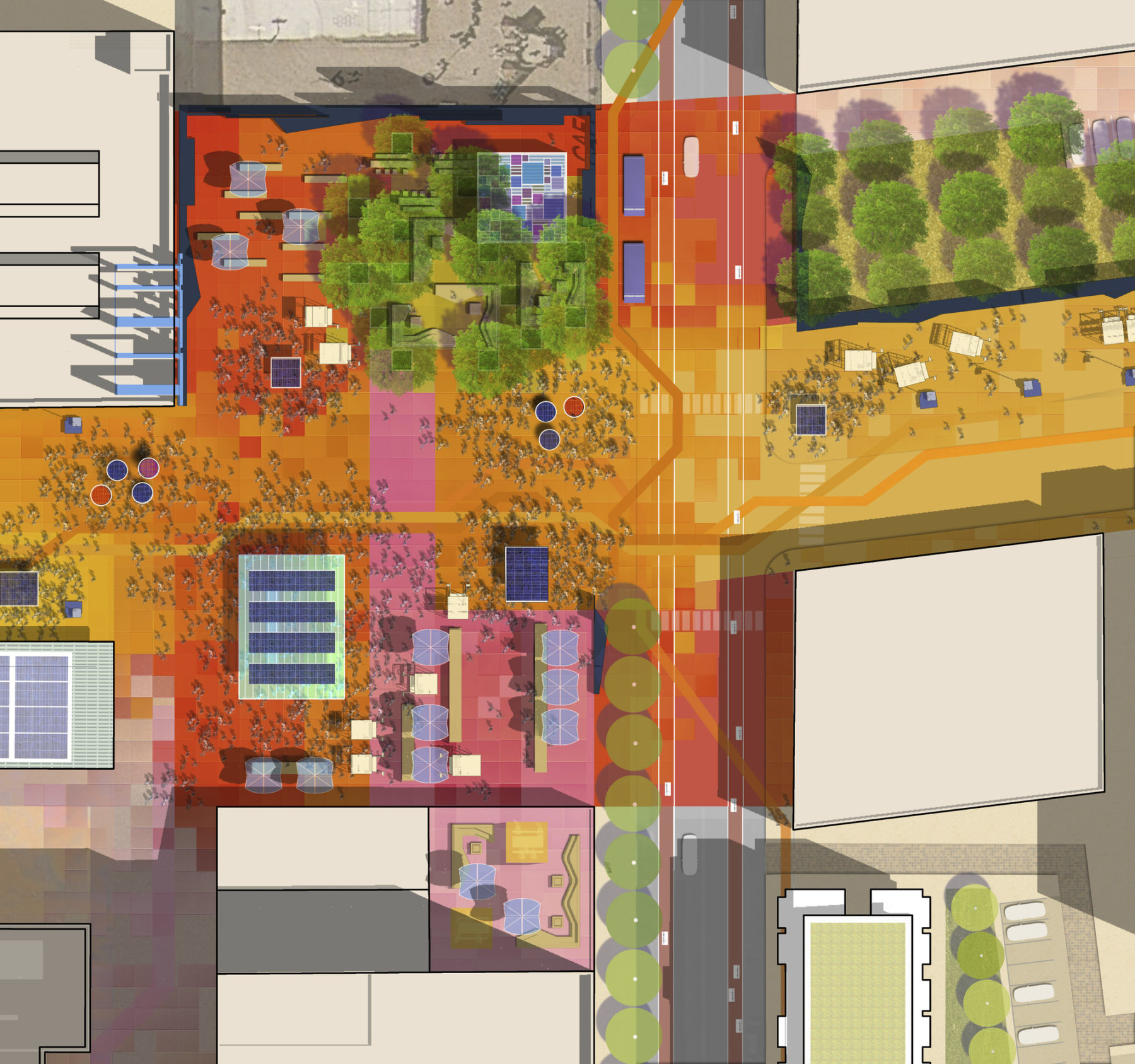
The core catalyzes new investment in TechTown. Engaging civic spaces and a carefully curated public realm program encourage participation, creation, and collaboration.
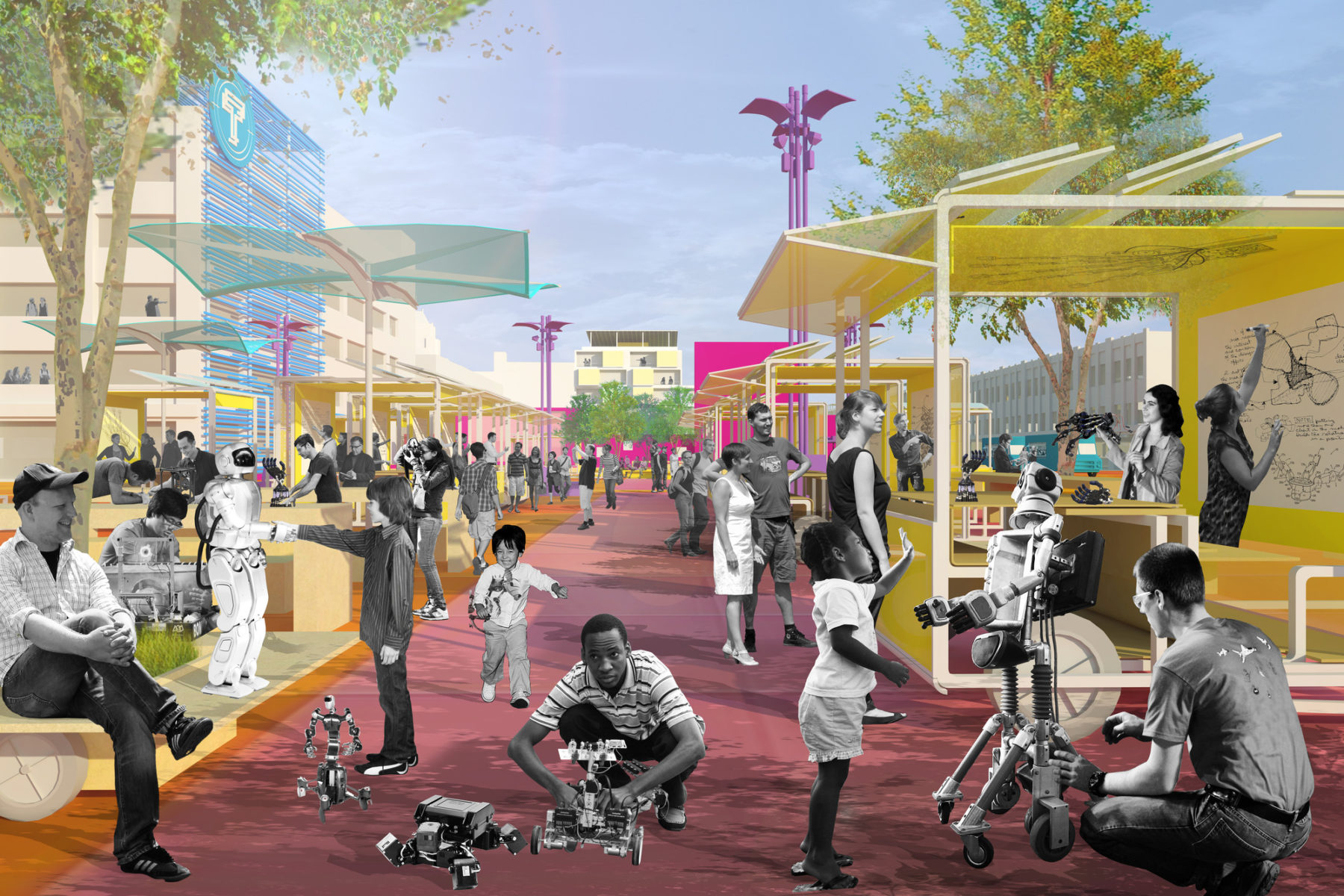
The core plaza is designed to encourage collaboration and entrepreneurial activity the heart of the district
Environmental, economic, and cultural sustainability are foundational elements of the plan. Public open space improvements create a walkable district that reduces demand for parking, and provide access to light rail transit. The plan contains an exercise circuit and integrated bicycle network to promote health and wellness. Landscape strategies include bioswales to enhance infiltration and reduce surface runoff, while streetscape improvements increase pervious surfaces. The economy of the district focuses on local production of goods and services, and job creation around innovation. The plan preserves the district’s history and character through adaptive reuse of historic buildings.
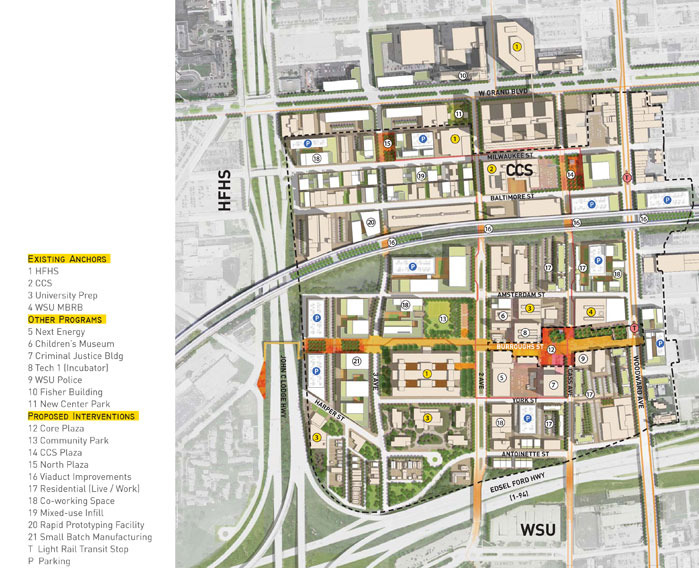
The long term vision positions TechTown as the hub of innovation in Detroit. A renewed public realm ties together ideas-based industries within a vibrant urban neighborhood.
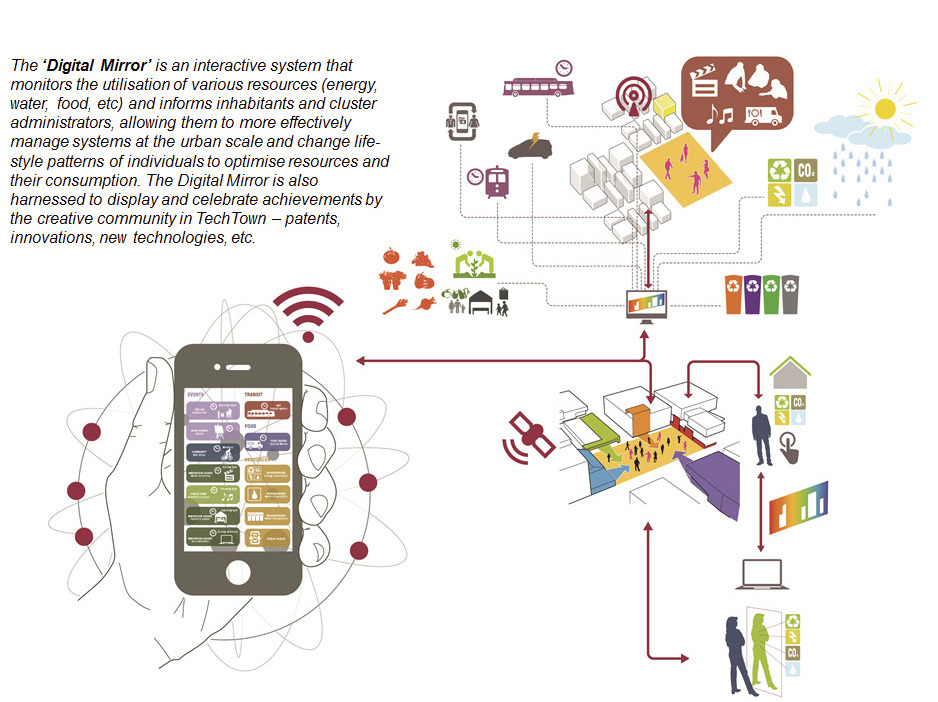
The “Digital Mirror” is an interactive system that monitors the utilization of various resources (energy, water, food, etc.) and informs inhabitants and cluster administrators. This allows them to more effectively manage systems at the urban scale and change lifestyle patterns of individuals to optimize resources and their consumption. It also displays and celebrates achievements by the creative community in TechTown, such as patents, innovations, and new technologies.
The team employed a variety of strategies to encourage participation in the TechTown planning process. A regular series of open forums included presentations from experts in innovation districts and research parks, urban design, and planning. Interactive games, such as the Circuit Board and the Coin Survey allowed the community to test program and design alternatives, and to rank strategies for investment. MyTechTown—an interactive online graphic survey—collected constituents’ qualitative impressions of the district, which helped the design team tailor the planning, programming, and urban design strategies.
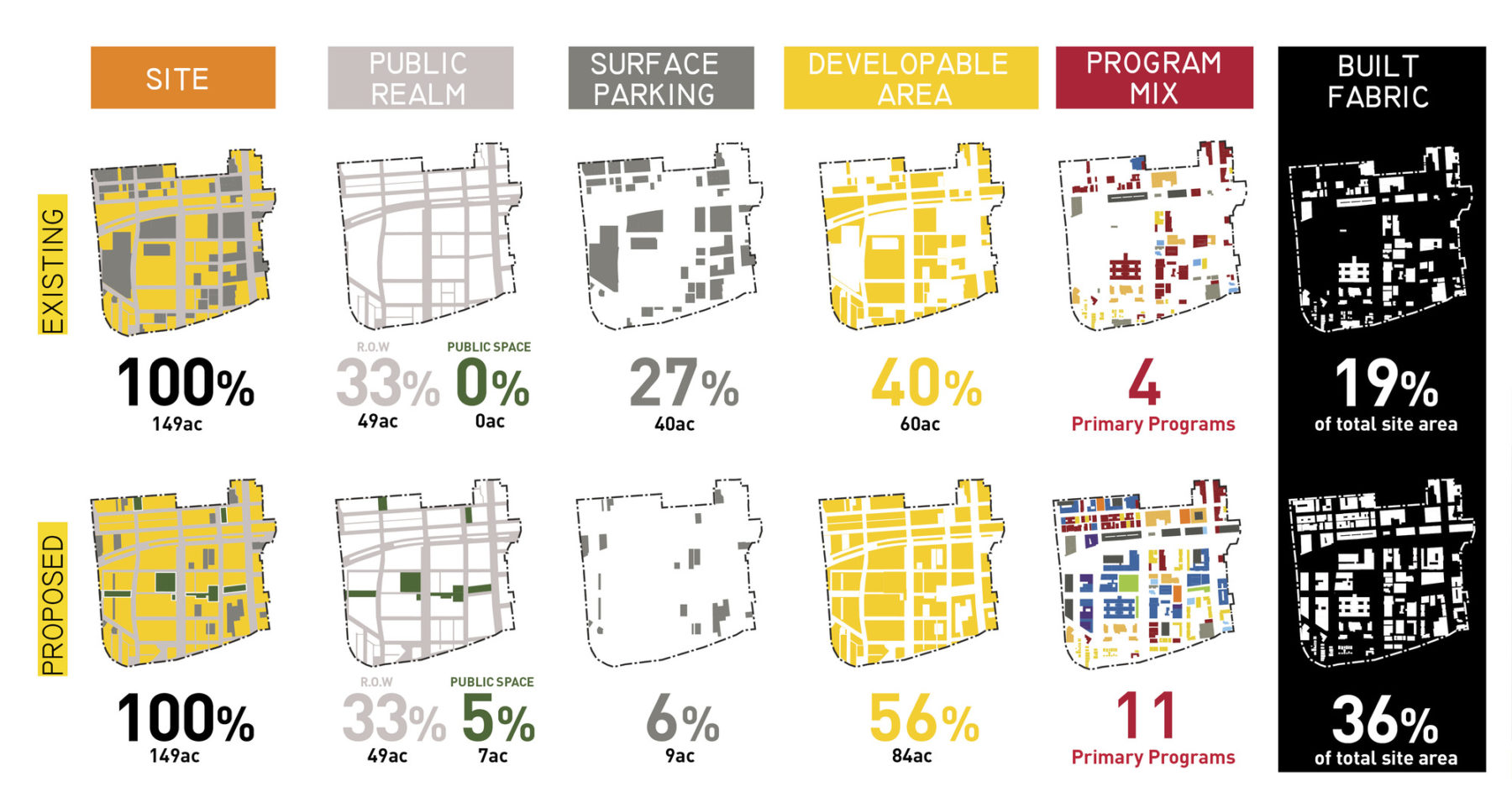
A district currently defined by surface parking lots and a lack of identity will transform into a sustainable, dense, well-balanced urban setting, with a clearly defined heart and strong sense of place
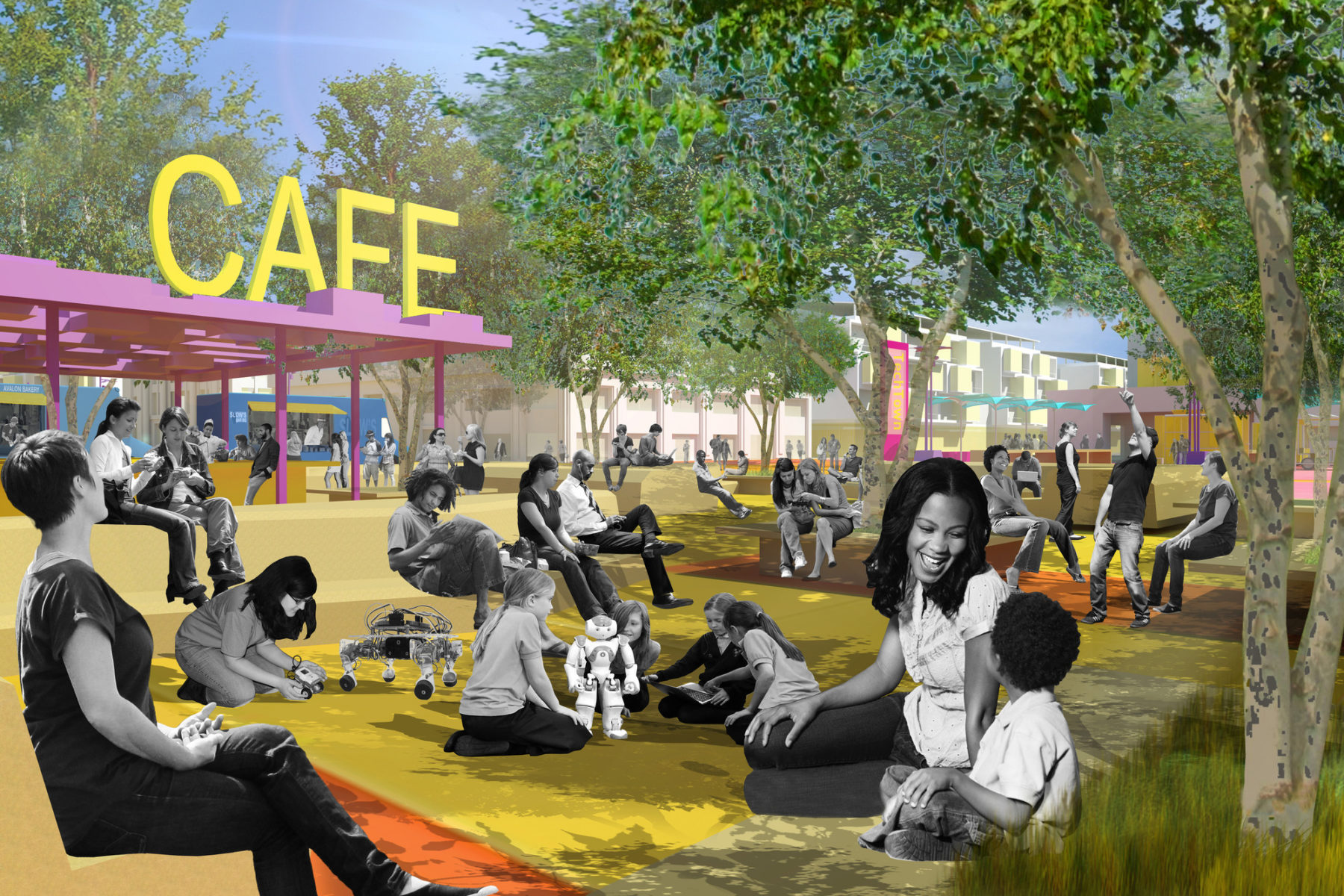
The Brainstorming Grove and Think Tank provide an informal destination for meeting and socializing, with access to the nearby Short Circuit Cafe and food trucks
The vision for TechTown will be realized over time. Initial investments will occur at the heart of the district, beginning with the creation of a pedestrian priority zone that reinforces connections.
For more information contact Dennis Pieprz.

